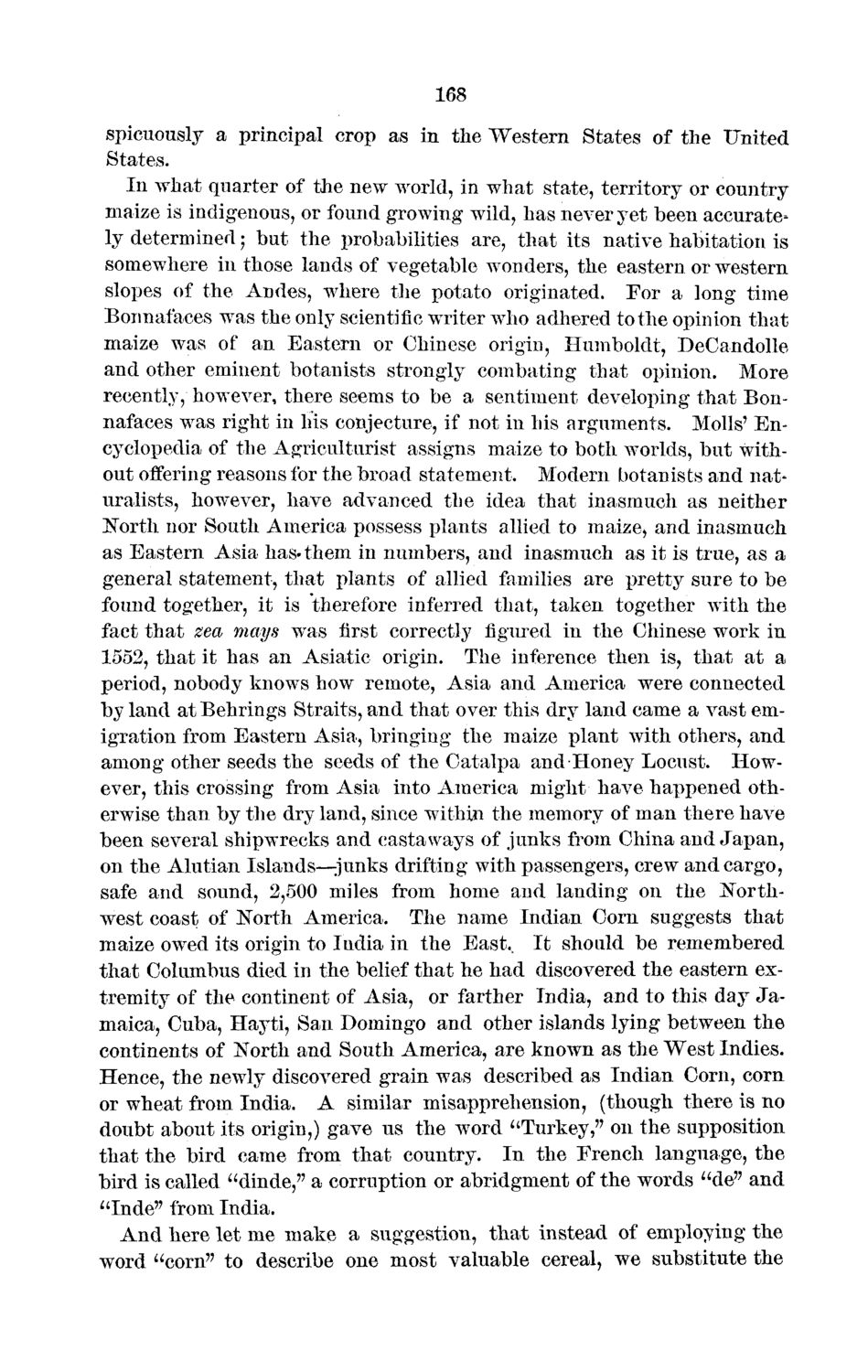| |
| |
Caption: Board of Trustees Minutes - 1872
This is a reduced-resolution page image for fast online browsing.

EXTRACTED TEXT FROM PAGE:
168 spicuously a principal crop as in the Western States of the United States. In what quarter of the new world, in what state, territory or country maize is indigenous, or found growing wild, has never yet been accurately determined; but the probabilities are, that its native habitation is somewhere in those lands of vegetable wonders, the eastern or western slopes of the Andes, where the potato originated. For a long time Bonnafaces was the only scientific writer who adhered to the opinion that maize was of an Eastern or Chinese origiu, Humboldt, DeCandolle and other eminent botanists strongly combating that opinion. More recently, however, there seems to be a sentiment developing that Bonnafaces was right in his conjecture, if not in his arguments. Molls' Encyclopedia of the Agriculturist assigns maize to both worlds, but without offering reasons for the broad statement. Modern botanists and naturalists, however, have advanced the idea that inasmuch as neither North nor South America possess plants allied to maize, and inasmuch as Eastern Asia has-them in numbers, and inasmuch as it is true, as a general statement, that plants of allied families are pretty sure to be found together, it is therefore inferred that, taken together with the fact that zea mays was first correctly figured in the Chinese work in 1552, that it has an Asiatic origin. The inference then is, that at a period, nobody knows how remote, Asia and America were connected by land at Behrings Straits, and that over this dry land came a vast emigration from Eastern Asia, bringing the maize plant with others, and among other seeds the seeds of the Catalpa and Honey Locust. However, this crossing from Asia into America might have happened otherwise than by the dry land, since within the memory of man there have been several shipwrecks and castaways of junks from China and Japan, on the Alutian Islands—junks drifting with passengers, crew and cargo, safe and sound, 2,500 miles from home and landing on the Northwest coast of North America. The name Indian Corn suggests that maize owed its origin to India in the East,, It should be remembered that Columbus died in the belief that he had discovered the eastern extremity of the continent of Asia, or farther India, and to this day Jamaica, Cuba, Hayti, San Domingo and other islands lying between the continents of North and South America, are known as the West Indies. Hence, the newly discovered grain was described as Indian Corn, corn or wheat from India. A similar misapprehension, (though there is no doubt about its origin,) gave us the word "Turkey," on the supposition that the bird came from that country. In the French language, the bird is called "dinde," a corruption or abridgment of the words "de?? and "Inde" from India. And here let me make a suggestion, that instead of employing the word "corn" to describe one most valuable cereal, we substitute the
| |